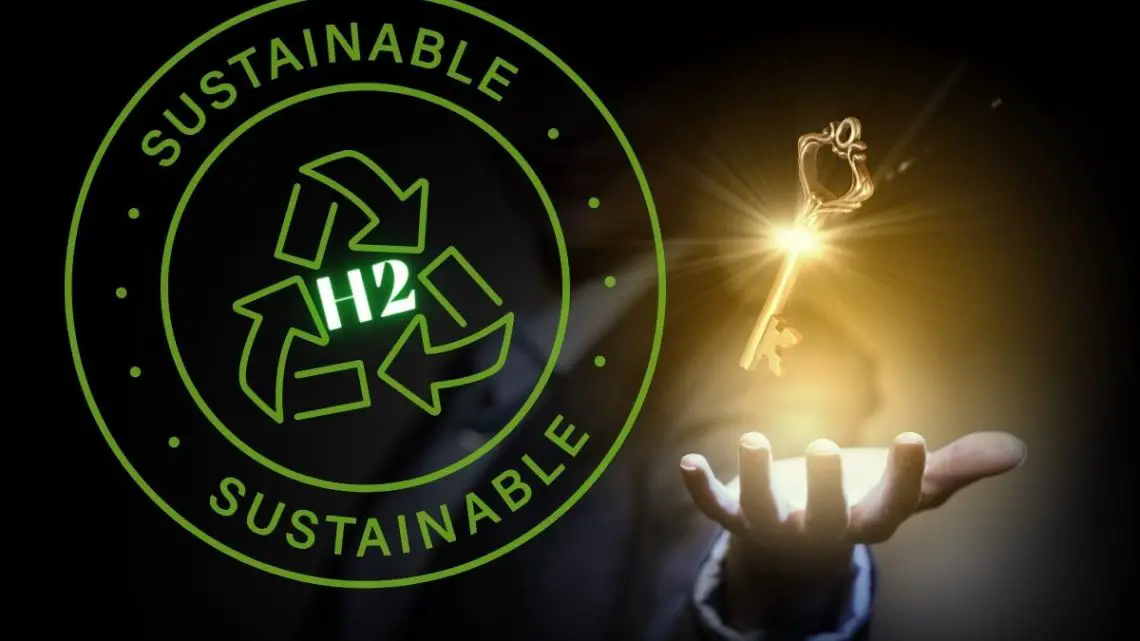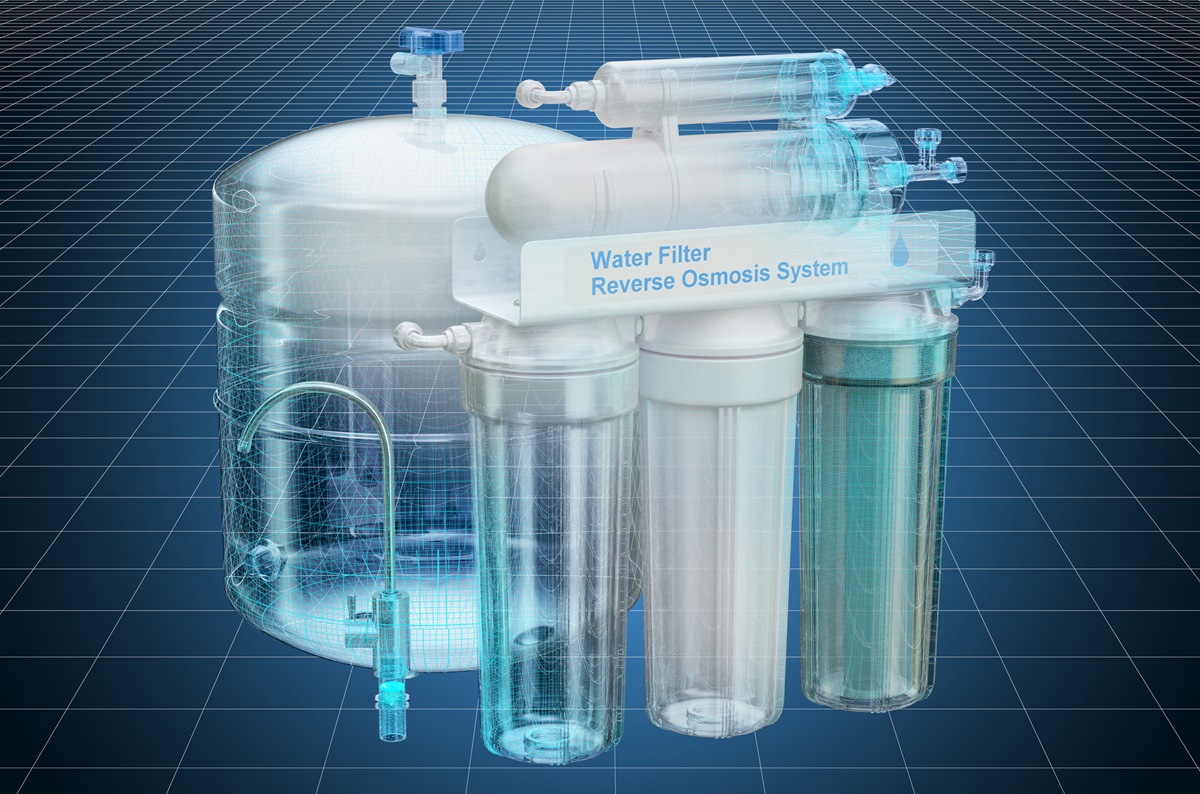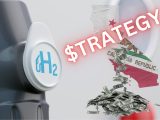
Reverse Osmosis: The Key to Unlocking Sustainable Green Hydrogen Production
April 11, 2024The quest for sustainable energy sources has led to a surge in the exploration of green hydrogen, a clean fuel derived from the electrolysis of water. However, the production process demands high-purity water—a requirement that poses a significant challenge amidst growing concerns over water scarcity and wastage in various sectors. The potential answer could lie in an unlikely source—tertiary treated wastewater.
The Role of Tertiary Treatment in Enhancing Green Hydrogen Production
Tertiary treatment, a crucial step beyond secondary water treatment, offers a solution by eliminating persistent contaminants and yielding cleaner water. This process, particularly regarding reverse osmosis (RO), has been spotlighted in a recent study as a viable method for utilizing tertiary treated wastewater in green hydrogen electrolysis.
This breakthrough was published by Wei Liu, Heberto Bustamante, and Kondo-Francois Aguey-Zinsou at the MERlin, School of Chemistry, University of Sydney, Sydney, Australia, under the American Chemical Society. The study underscores the significance of reverse osmosis in the tertiary treatment, revealing how it allows for the creation of highly purified water that does not compromise the integrity of electrolyzers in the hydrogen production process.
Water Wastage in the United States: A Glimpse into the Gravity of the Situation
Before we unravel the implications of this breakthrough, it’s essential to understand the severity of water wastage across the nation:
- Annually, American families squander 9,400 gallons through household leaks, which could cover over 300 laundry loads.
- Nearly 900 billion gallons are lost countrywide due to these leaks—the equivalence of water usage in around 11 million homes.
- Running dishwashers only when they’re full could save each family 320 gallons a year.
- Simple acts like shutting off taps while brushing teeth or shaving could save up to 5,700 gallons per household annually.
- One lawn irrigation session can utilize more water than 800 showers—an alarm bell for the need to conserve.
In light of these alarming figures, every efficiency gain and resource-saving measure counts, especially when it concerns emerging technologies like green hydrogen production.
How Tertiary Water Can Propel Green Hydrogen Production
Creating green hydrogen — a clean fuel — involves splitting water into hydrogen and oxygen using a process called water electrolysis. This requires really clean water, to avoid damaging the delicate machines used. Interestingly, it turns out that chloride, a common unwanted chemical found in cleaned wastewater, doesn’t interfere with making hydrogen. This means that water cleaned to a high level, known as tertiary treated effluent, after being further purified by a process called reverse osmosis, can be used to make green hydrogen.

Visualization of Reverse Osmosis 3D rendered model – Credit: Photo by depositphotos.com
Reverse osmosis is a powerful cleaning process that removes many remaining impurities from water, making it pure enough for sensitive uses like electrolysis. Think of it like an ultra-fine filter that only lets water molecules through.
In more detail, there are studies showing we can actually use this highly cleaned wastewater to efficiently create hydrogen, particularly through machines known as commercial proton exchange membrane (PEM) electrolyzers. These machines work better at higher electrical currents, despite some elements in water, referred to as monovalent cations (like sodium and potassium), which might lower efficiency under less intense conditions. Another type of element, divalent cations (which have a stronger attraction to parts of the electrolyzer), require removing through reverse osmosis to ensure the electrolyzer works well.
By applying reverse osmosis, this super-cleaned wastewater has been proven to support an electrolysis efficiency of 59%, equaling a hydrogen production rate of 1.79 liters per minute with a 35 ampere current. In simpler terms, by using advanced cleaning techniques on wastewater, we can efficiently produce green hydrogen, turning a waste product into a valuable resource for clean energy.
Key Highlights in Green Hydrogen and Water Treatment Integration
- Decarbonization Potential: Hydrogen production via water electrolysis represents a crucial step towards decarbonizing hard-to-abate sectors, showcasing a significant move away from fossil fuel dependence.
- High-Purity Water Requirement: To ensure the effective operation of conventional electrolyzers, a high degree of water purity is necessary, necessitating a purification stage prior to the electrolysis process.
- Tertiary Effluents as a Solution: Utilizing tertiary effluents from municipal wastewater treatment plants could alleviate the strain on overtaxed water resources, facilitating large-scale hydrogen production.
- Feasibility Study: Our investigation into the viability of using tertiary effluents for hydrogen production with a commercial proton exchange membrane electrolyzer has provided promising results.
- Impact of Chloride: Analysis indicated that chloride concentrations (<1 ppm), commonly present in effluents, do not adversely affect electrolysis conditions.
- Effect of Monovalent Cations: While Na+ and K+ decreased the electrolysis efficiency at lower currents, their effects were mitigated at higher currents, leading to efficiency recovery.
- Challenge of Divalent Cations: The presence of divalent cations necessitates the use of reverse osmosis (RO) to remove them before electrolysis, due to their strong affinity for the electrolyzer-separating membrane.
- Reverse Osmosis Efficacy: Post-RO treatment enabled the electrolysis of real tertiary effluents with a maximum efficiency of 59%, achieving a hydrogen production rate of 1.79 L/min at an electrolysis current of 35 A.
- Circular Economy Opportunity: This approach not only offers a sustainable method for green hydrogen production but also presents a circular economy model by converting wastewater into value-added products, reducing environmental discharge.
This video explains the Tertiary Water process for the Sacramento River
Implications for the Water-Intense Economy and Environment
Industries like domestic services, mining, livestock, and aquaculture are among the largest consumers of water. Incorporating treated wastewater in green hydrogen production offers a promising circular economy model. Not only can it create value-added products, but it also ameliorates pressure on stressed water resources and emphasizes water reuse—a component crucial for the environment and existing industries.
Looking Ahead
 The use of tertiary treated water via reverse osmosis for green hydrogen production charts a path that marries innovation with sustainability, offering a concrete strategy to address the dual challenges of water scarcity and the quest for sustainable energy solutions. Environmentalists, innovators, and water industry professionals alike are keeping a watchful eye on this burgeoning synergy of water treatment technology and clean fuel production.
The use of tertiary treated water via reverse osmosis for green hydrogen production charts a path that marries innovation with sustainability, offering a concrete strategy to address the dual challenges of water scarcity and the quest for sustainable energy solutions. Environmentalists, innovators, and water industry professionals alike are keeping a watchful eye on this burgeoning synergy of water treatment technology and clean fuel production.
This seamless integration of sustainability in industrial processes not only aligns with environmental conservation goals but also stresses the importance of technology in shaping future energy landscapes. Green hydrogen produced through such means not only promises a reduced carbon footprint but may also herald a new era of water conservation and strategic resource management.
With the mounting emphasis on renewable energy sources and efficient resource utilization, reverse osmosis-treated tertiary water stands out as a pivotal piece in the green hydrogen puzzle. It’s a breakthrough that marks a stride towards ecological responsibility while fostering the growth of the green economy.
FAQs on Green Hydrogen Production, Electrolyzers and Tertiary Water Use
How much water is used in making green hydrogen?
The amount of water used to produce green hydrogen primarily depends on the efficiency of the electrolyzer and the method used for its production. For green hydrogen production through electrolysis, approximately 9 liters of water are required to produce 1 kilogram of hydrogen. However, this figure can vary based on the technology used and the operational efficiency of the electrolysis process. It’s essential to note that as electrolyzer technologies advance, the water use efficiency is expected to improve.
How does an electrolyzer work?
An electrolyzer is a device that uses electricity to split water into hydrogen and oxygen through a process called electrolysis. This process involves passing an electric current through water containing an electrolyte, which facilitates the movement of ions in the water. The water molecules are split at the electrodes, with hydrogen gas collecting at the cathode (negative electrode) and oxygen gas at the anode (positive electrode). There are several types of electrolyzers, including alkaline electrolyzers, polymer electrolyte membrane (PEM) electrolyzers, and solid oxide electrolyzers, each differing in materials used and operating conditions but fundamentally performing the same water-splitting reaction.
What is tertiary water used for?
Tertiary water, also known as treated wastewater or reclaimed water, undergoes additional treatment beyond primary and secondary treatment stages to remove remaining contaminants. Tertiary treated water is highly purified and can be used for various non-potable purposes, including:
- Agricultural irrigation: Tertiary water provides a reliable water source for irrigating crops, especially in regions with water scarcity.
- Landscape irrigation: It can be used for watering public parks, golf courses, and residential lawns, reducing the demand for potable water for these purposes.
- Industrial processes: Tertiary water can serve as process water in industries, such as cooling water in power plants or as a raw material in certain manufacturing processes.
- Groundwater recharge: Treated wastewater can be used to replenish aquifers, helping to maintain groundwater levels and supporting sustainable water management.
- Recreational uses: In some cases, tertiary water is utilized for recreational purposes, such as in artificial lakes or ponds.
The specific applications of tertiary water depend on local regulations, the level of treatment, and the availability of infrastructure to distribute reclaimed water.



 HFN News is your leading source for fresh hydrogen and renewable energy updates. Amid the fast-paced growth of hydrogen companies, we provide top-notch news and insights about this exciting sector. Our coverage spans from hydrogen cars to global sustainable initiatives, and we highlight the latest in green jobs and developing hydrogen hubs. We invite you to share your local hydrogen news and explore today’s renewable energy job listings on our site. Thanks for choosing HFN News as your trusted guide to the hydrogen and renewable energy world!
HFN News is your leading source for fresh hydrogen and renewable energy updates. Amid the fast-paced growth of hydrogen companies, we provide top-notch news and insights about this exciting sector. Our coverage spans from hydrogen cars to global sustainable initiatives, and we highlight the latest in green jobs and developing hydrogen hubs. We invite you to share your local hydrogen news and explore today’s renewable energy job listings on our site. Thanks for choosing HFN News as your trusted guide to the hydrogen and renewable energy world!